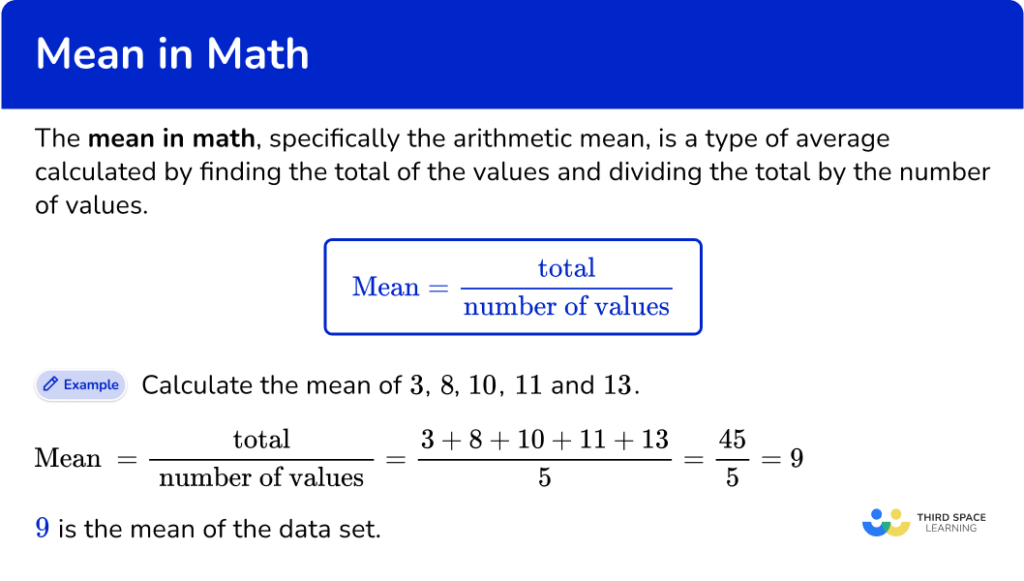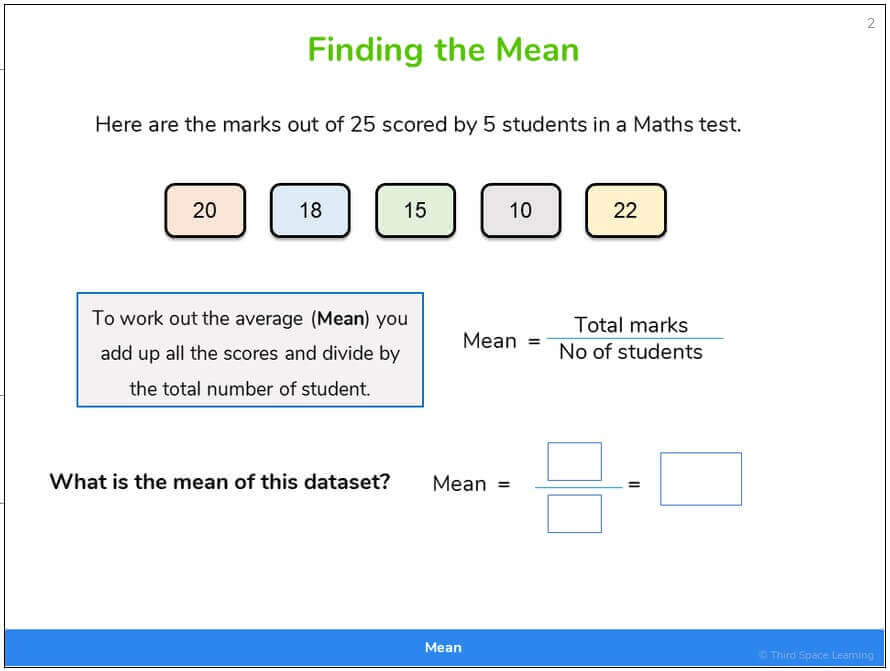Understanding "Mean" In Math & Statistics: Your Quick Guide
Are you curious about how we make sense of data and extract meaningful insights? The concept of "mean," often referred to as the average, lies at the heart of understanding and interpreting numerical information, acting as a cornerstone in statistics, mathematics, and beyond.
The mean, in its essence, is a measure of central tendency. This means it provides a single value that represents the typical or central value within a dataset. Think of it as a balancing pointa value around which the other numbers in the dataset cluster. Several types of means exist, each offering a unique perspective on the data, but the arithmetic mean remains the most widely recognized and utilized.
Consider a simple scenario: You have the numbers 2, 7, and 9. What is their mean? The process is straightforward: add the numbers together (2 + 7 + 9 = 18), then divide by the total count of numbers (in this case, 3). Thus, the mean is 6. This simple calculation reveals the core principle of the mean: it provides a concise summary of the data, giving us a central value to work with. The mean is also the easiest measure to compute compared to other measurements such as median and mode.
Here's a deeper look at the types of means:
1. Arithmetic Mean (AM): This is the "average" most people are familiar with. It's calculated by summing all the values in a dataset and dividing by the number of values.
2. Geometric Mean (GM): The geometric mean is used primarily when dealing with percentages, ratios, or growth rates. It's the nth root of the product of n numbers.
- Michael Franzese From Mobster To Motivational Speaker Discover Now
- Discover Iskcon Temples Your Guide To Divine Bliss Culture
3. Harmonic Mean (HM): The harmonic mean is used when dealing with rates or ratios, particularly when dealing with rates of work, speed, or travel. The harmonic mean is the reciprocal of the arithmetic mean of the reciprocals of the data.
Heres a table summarizing these key aspects:
| Type of Mean | Formula | Use Cases | Key Features |
|---|---|---|---|
| Arithmetic Mean (AM) | Sum of values / Number of values | General datasets, finding the average of a set of numbers | Most commonly used, easy to calculate, sensitive to extreme values. |
| Geometric Mean (GM) | nth root of (x1 x2 ... * xn) | Growth rates, ratios, percentages, financial returns | Useful for data that grows exponentially, less sensitive to outliers than AM. |
| Harmonic Mean (HM) | n / (1/x1 + 1/x2 + ... + 1/xn) | Rates, ratios, speeds, work problems | Best for data involving rates or proportions, less sensitive to extreme values than AM. |



Detail Author:
- Name : Estelle Bogisich
- Username : bianka.johnston
- Email : magnolia.schumm@upton.com
- Birthdate : 1978-06-15
- Address : 351 Sigrid Mount Purdystad, CA 02657-6877
- Phone : +1-856-785-6365
- Company : Padberg-Ullrich
- Job : Geologist
- Bio : Quod sint est ut cupiditate a. Corrupti tenetur at facere autem odio est ut. Sed enim eum qui eos perspiciatis magnam. Quia at quae tempora est ut repudiandae et dolor.
Socials
instagram:
- url : https://instagram.com/tanya_littel
- username : tanya_littel
- bio : Repellat quis est in ipsam nisi itaque delectus dolores. Ipsam quas alias voluptas ut.
- followers : 2415
- following : 1205
twitter:
- url : https://twitter.com/tanya.littel
- username : tanya.littel
- bio : Eum nisi dolores architecto voluptatem eos voluptatem. Eligendi est sunt rerum dolor ea. Architecto voluptatem perferendis voluptas necessitatibus at.
- followers : 5093
- following : 2856
linkedin:
- url : https://linkedin.com/in/tanya_littel
- username : tanya_littel
- bio : Totam est illum ad voluptatem mollitia sequi.
- followers : 4637
- following : 1735
tiktok:
- url : https://tiktok.com/@tlittel
- username : tlittel
- bio : Eum consectetur molestias repellendus accusantium.
- followers : 944
- following : 11